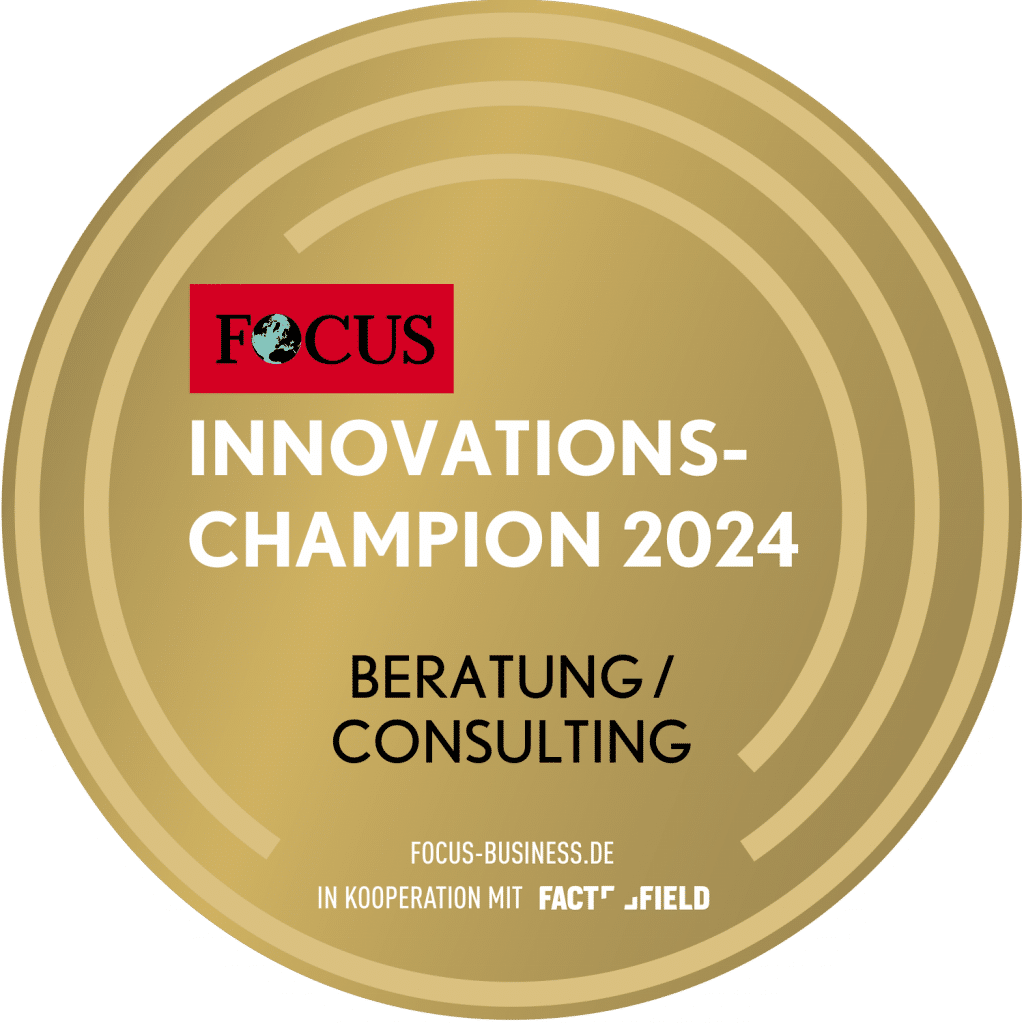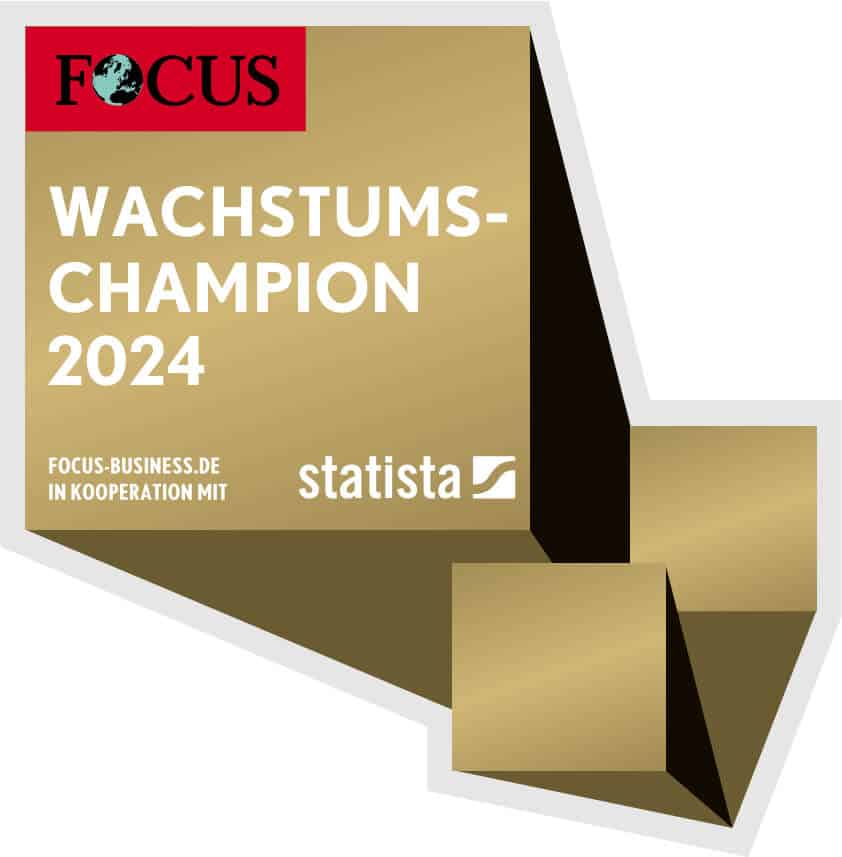Agilität gilt als Antwort auf die neuen Herausforderungen der VUCA-Welt. Flexibles Reagieren ist das Gebot der Stunde. Doch das ist oft leichter gesagt als getan: Traditionelle Organisationsstrukturen und Führungsverständnis behindern die Einführung von Agilität in vielen Fällen. Doch es lohnt sich für Unternehmen, diese Hindernisse aus dem Weg zu räumen. Warum, das erklärt Stefan Vieweg im Interview.
„Agilität ist keine Mode“
Katja Heumader: Sie befassen sich seit mehreren Jahren mit der Einführung von Agilität in Organisationen, sowohl privatwirtschaftlich als auch in der öffentlichen Verwaltung. Warum sollte man in Zukunft auf Agilität setzen?
Stefan Vieweg: Zweifelsohne leben wir in der vielzitierten VUCA world unter permanentem Veränderungsdruck. Digitalisierung und Cyber-Risiken, Klimawandel mit ESG-Risiken und aus jüngster Vergangenheit ganz offensichtlich – Pandemien – führen zu kurzfristigem Anpassungsbedarf, wenn man nachhaltig erfolgreich sein möchte. Das bedeutet nichts weniger, als dass die eigenen Prozesse so resilient und flexibel aufgesetzt werden müssen, dass Änderungen in Prioritäten und neue Anforderungen nicht als Störgröße wahrgenommen werden, sondern vielmehr die eigenen Strukturen gut damit umzugehen lernen.
Und da sind wir dann unmittelbar beim Thema Agilität: mit der effektiven und effizienten Ausnutzung aller in einer Organisation verfügbaren Ressourcen sind die notwendigen Vorkehrungen für eine erfolgreiche Anpassung an diese schnellen Änderungen getroffen. Das bedeutet konkret, dass dezentral operatives Detailwissen auf Arbeitsebene zu schnellen Entscheidungen genutzt werden kann, um damit Opportunitäten wahrzunehmen und Risiken zu vermeiden. Genau das bieten wiederum agile Teams, die operative Verantwortung übernehmen und Entscheidungen realisieren, in kurzer Taktung (Iteration oder Sprint) Feedback erhält und über Transparency Vertrauen sowohl nach innen als auch nach außen aufbaut. Das funktioniert nur, wenn auch das Management sich auf die veränderte Rolle des „Challenging und Coaching“ einlässt, zentral zu treffende Festlegungen vornimmt und operativ die Teams „machen lässt“. Andererseits müssen die Mitglieder eines agilen Teams die übertragene Verantwortung auch annehmen.
In zumeist von traditionellem Projektmanagement getriebenen Kreisen wird Agilität vielfach als „Buzzword“ gesehen, und gar mit „hybriden“ Ansätzen suggeriert, dass die Agilitäts-„Welle“ unter klassischem „weiter so“ subsummiert werden kann.
„Agiles Management gründet sich auf zeitgemäßes und kundenzentriertes Mindset“
Als „klassisch“ ausgebildeter langjährig Projektleiter und Programm-Manager, der sich über die letzten 15 Jahre mehr und mehr auf agiles Management fokussiert hat, sehe ich das anders: Einerseits ist Agilität keine Mode, die bald schon wieder verschwunden sein wird, noch ist richtig umgesetzte Agilität lediglich eine methodisch-technische Kompetenz. Agiles Management gründet sich auf ein anderes – zeitgemäßes und kundenzentriertes – Mindset.
Im Übrigen vielleicht eine recht interessante Erkenntnis aus dem historischen Management-Kontext: angefangen von dem Fayol’schen Hierarchieverständnis mit Effizienz und Stabilität der gut funktionierenden Bürokratie der Linienfunktion hat sich über den „Don’t care how you do it“ Management-by-Objective-Ansatz der 60er Jahre dann in den 90er und Nuller Jahren zunehmend die Projektmanagement-Erkenntnis den Weg gebahnt, um komplexe und neuartige – aber einmalige – prä-digitale Herausforderungen mit zweckgebundenen Projektteams und (Fayol’scher Administration?) zu stemmen. Die ist reihenweise seit dem Beginn des digitalen Zeitalters mit der Dotcom-Welle passé, agile Alternativen wurden entwickelt. Dies führte schon 2001 zum berühmten agilen Manifest. Insofern ist es konsistent, dass der jeweilige Zeitgeist mit seinen besonderen Herausforderungen auch adäquate Lösungen braucht und findet. Im Software-Zeitalter der 2020er ist das die Agilität, gepaart mit passendem Führungsverständnis wie „Servant Leadership“ und vertrauensbildender Transparenz.
Natürlich gibt es auch heute noch klar abgegrenzte Aufgaben, die in einem sehr stabilen Umfeld auch klassisch erfolgreich abgewickelt werden.
Mit zunehmender Dynexity (ein Kunstwort aus Dynamik und Komplexität) – braucht es eine flexible Vorgehensweise, die es der Organisation ermöglicht, nachhaltige Lösungen und resiliente Prozesse aufzubauen – und genau das kann gut implementierte Agilität bieten.
KH: Auf welche Hindernisse stoßen Sie in Ihren Projekten immer wieder?
SV: Um es plakativ zu sagen: Ich habe immer wieder als systemischer Change Manager mit drei verschiedenen Typen von Betroffenen zu tun, die nicht nur zu anzutreffen sind, wenn es um die Einführung oder Verbesserung von Agilität in der Organisation geht:
- Die Bewahrer: „Warum verändern, es ist doch gut, wie es momentan ist.“ Hier wird (noch) nicht akzeptiert, dass eine Veränderung – aus welchen Gründen auch immer – ansteht.
- Die Alleingelassenen: „Wollen und können tun wir schon, aber dürfen tun wir halt nicht.“ Hier fehlt die klare Unterstützung von der Entscheider-Ebene, einen neuen Weg konsequent zu beschreiten. Dies führt dazu, dass diejenigen, die in einem neuen Ansatz wie der Agilität eine Chance zu echter Verbesserung sehen und sich engagieren wollen, schnell die intrinsische Motivation verlieren. Das geht bis hin zur inneren Kündigung.
- Die beratungsresistenten Halbwissenden: „Wir haben Scrum, also sind wir schon agil“. Zwar ist zunächst nichts gegen einzelne agile Keimzellen einzuwenden, aber es ist der kontinuierliche Lernprozess, die Offenheit, von den Besten lernen und sich weiterentwickeln zu wollen. Das macht den Unterschied zwischen einem agilen Team und einem erfolgreichen agilen Team aus.
Bei der Einführung von Agilität ist allerdings eine große Herausforderung das Umdenken in ein neues Rollenverständnis der Leitungsebene. Es fällt vielen Führungskräften zunächst schwer, sich aus operativen Problemen herauszuhalten und die Teams eigenständig machen zu lassen. Dabei bietet gut eingeführte agile Arbeitsweise der Führungsebene sogar eine bessere Kontrolle als es das klassisches Projektmanagement im Meilenstein-Ansatz je könnte: durch die Taktung in beispielsweise zweiwöchigen Sprints mit Reviews der tatsächlichen Arbeitsergebnisse wird viel schneller transparent, was tatsächlich geleistet wurde und auf welche Themen der Fokus gelegt werden muss.
Kurzum, loszulassen und die agilen Teams in Eigenverantwortung die gesetzten Prioritäten umsetzen zu lassen fühlt sich als „klassische“ Führungskraft manchmal schlecht an. Aber da kann ich nur ermutigen: das Vertrauen der Führungsebene in die Mitglieder ihrer Teams zahlt sich schnell in Form von höherer Mitarbeiterzufriedenheit und letztlich besseren Arbeitsergebnissen aus.
SAFe® gibt eindeutigen Rahmen vor
KH: Sie arbeiten hauptsächlich mit SAFe®, dem Scaled Agile Framework. Abläufe und Methoden sind darin ziemlich detailliert festgelegt. Wie passen diese strikten Vorgaben zu dem Gedanken, flexibler und freier zu arbeiten?
SV: Viele Menschen, die noch nicht die Gelegenheit hatten, sich mit agilem Management näher zu befassen, haben Vorstellungen der Planlosigkeit, chaotischer Flexibilität (heute dieses, morgen jenes), keinerlei Dokumentation etc. Die Mythen sind da grenzenlos…
Ich vergleiche den lean-agilen Ansatz, wie er mit SAFe® – das mit weitem Abstand marktführende Rahmenwerk für skalierende Agilität in Organisationen – gerne mit einer Produktionsstraße: um in kurzer Durchlaufzeit hohe Stückzahlen von qualitativ hochwertigen Endprodukten fertigen zu können, braucht es aufeinander abgestimmte Stationen mit eingespielten Teams. Genau das bietet SAFe® zum Beispiel mit der Organisation dieser „Stationen“ in sogenannten „Agile Release Trains“ (ART) oder auch im größeren Kontext mehrerer ARTs zu „Solution Trains“. Hier werden kontinuierlich Innovationen identifiziert, entwickelt, umgesetzt und bis zur „Markteinführung“ vorbereitet.
Die Zusammenstellung der ARTs lässt sich unmittelbar aus dem für die jeweilige Organisation charakteristischen Wertestrom ableiten: Wenn die einzelnen agilen Teams in einem ART aufeinander abgestimmt einen solchen Hauptprozess weiterentwickeln, dann verbessert sich auch die gesamte Organisation. Beispiele: Zahlungsabwicklung bei einem öffentlichen Finanzdienstleister, Zulassungs- und Immatrikulationsprozess einer Hochschule, Kriminalitätsbekämpfung eine Polizeibehörde etc. Also auch bei Einsatzbereichen, bei denen es nicht notwendigerweise „nur“ um Softwareentwicklung geht.
Der Rahmen ist bei SAFe® eindeutig strukturiert: gemeinsamer Backlog (potenzieller Arbeitsvorrat), Daily Stand-Ups, zweiwöchige Sprintwechsel mit Review / System Demo, Retrospektive, quartalsweise große Planungs- und Abstimmungsrunden (PIP – Program Increment Planning), und vieles mehr. Diese Strukturen sind die Basis für Transparenz und Abstimmung zwischen den Teams, Vertrauensaufbau, Commitment und Verantwortungsübernahme. Das Ergebnis: signifikant kürzere Durchlaufzeiten, bessere Qualität, höhere Mitarbeiterzufriedenheit und – wie meine eigenen empirischen Forschungen zu diesem Thema zeigen: auch höhere Wirtschaftlichkeit.
Während diese Strukturen Voraussetzung für funktionsübergreifende Koordination zwischen Teams sind, so bleibt es in der Verantwortung der einzelnen agilen Teams, sich Ziele in dem vom Management gesetzten Rahmen zu definieren, im PIP bestätigen zu lassen und die Arbeitspakete (sogenannte „Features“ und „Stories“) selbstorganisiert und abzuarbeiten.
Erfolgsfaktoren für die Einführung von Agilität
KH: SAFe® zu etablieren ist aufwändig: Schließlich bedarf es der Vermittlung umfassender Methodenkompetenz. Warum lohnt sich dieses Investment?
SV: Wie bereits erwähnt zeigt die Erfolgsgeschichte von SAFe® nicht nur bessere und schnellere Arbeitsergebnisse bei höherer Mitarbeiterzufriedenheit – bereits ein erheblicher Vorteil – bei guter Implementierung ist der agile Reifegrad der Organisation rasch so hoch, dass sich das Investment auch wirtschaftlich schnell rechnet.
KH: Was raten Sie Organisationen, die mit der Umstellung auf agiles Arbeiten liebäugeln, aber noch zweifeln?
SV: Die Erfolgsfaktoren eines derartigen Veränderungsprozesses sind spätestens seit dem Weltbestseller „Leading Change“ von John Kotter bestens bekannt – und entsprechend findet sich auch in der von SAFe® empfohlenen Implementierungs-Roadmap genau diese Elemente wieder. An dieser Stelle sei nur auf drei Aspekte hingewiesen, die insbesondere bei Organisationen der öffentlichen Hand häufig als schwierig angesehen werden:
- Es braucht zunächst ein klares Commitment der Entscheider-Ebene zur neuen Art der funktionsübergreifenden, agilen Zusammenarbeit. Das heißt auch eine aktive Beteiligung und die Wahrnehmung der Vorbildfunktion ist unabdingbar. Beispielsweise ist es ein äußerst starkes Signal in die Organisation hinein, wenn die Führungskräfte sich ernsthaft mit einer Methode wie SAFe® durch Teilnahme an entsprechenden Schulungen und Erwerb des Zertifikats auseinandersetzen.
- Jedes Mitglied in der Organisation sollte mit der neuen Methode, zum Beispiel durch Schulung, vertraut gemacht werden, idealerweise auch ein entsprechendes Zertifikat erwerben. Diese Investition zahlt sich in Form von Vermeidung von Missverständnissen und damit letztlich weniger Problemen bei der Einübung neuer Verhaltensweisen und Abläufe. Wer hier vorne zu sehr spart, muss mit einem deutlich längerem Einführungszeitraum rechnen, bis die neuen Routinen sich auszahlen.
- „Machen – tun“: In einem überschaubaren (erfolgsversprechenden) Bereich ansetzen und aus diesem Pilotbereich notwendige Anpassungen für einen weiteren Rollout lernen.
KH: Lieber Herr Vieweg, herzlichen Dank für die ersten Einblicke in die Etablierung von SAFe® und die Umstellung auf agiles Management. Im zweiten Teil Ihres Interviews befassen wir uns dann nächste Woche mit der Einführung agiler Methoden in der öffentlichen Verwaltung.
The interview with Prof. Dr. Stefan Vieweg was conducted by Dr. Katja Heumader for the TCI editorial team.
Quelle Coverbild: © Asha Sreenivas | Adobe Stock


